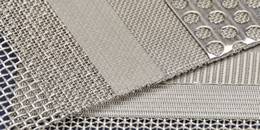Innovative Coating & Electroplating for Titanium Mesh Hydrogen Production
In the process of electrolytic hydrogen production, surface coatings are usually used to improve electrode efficiency, prolong service life, and enhance corrosion resistance. Currently, titanium electrodes such as titanium mesh and titanium steel mesh are typically processed using coating and plating methods, while materials such as titanium felt and sintered plates require electroplating.
Due to its inherent characteristics, titanium electrodes are ideal substrates for electrolytic hydrogen production. Their corrosion resistance ensures durability in harsh electrolytic environments, while high conductivity facilitates efficient electron transfer. In addition, the porous nature of titanium mesh provides ample surface area for coating and electroplating processes.
Preparation of Coated Titanium Electrodes
Using metallic titanium as the substrate, coating its surface with oxides mainly composed of platinum group metals as the catalyst for electrochemical reactions to produce hydrogen. Typically, it involves several steps including surface treatment, coating application, and heat treatment.
Process
- Surface Treatment: Thoroughly clean the titanium substrate, using methods such as sandblasting or abrasive brushing to remove any contaminants, oil, or oxides that may hinder the adhesion of the coating. Clean the surface and create a rough texture to enhance the adhesion and contact area of the coating.
- Coating and Drying: Apply primer or adhesive to clean and treated titanium surface. Coat the required platinum group metal coating solution on the titanium substrate (common methods include spraying and impregnation), and then dry it.
- Heat Treatment: After drying, repeat the heat treatment or curing process to fully cure the coating, improve coating adhesion, mechanical strength, and chemical resistance.
- Quality Control: Coatings are visually inspected and adhesion tested to ensure they are firmly attached to the titanium substrate.
Preparation of Electroplated Titanium Electrodes
Surface treatment steps effectively remove the oxide layer and impurities on the surface of the titanium plate, preparing the electrode for the subsequent platinum electroplating process.
Process
- Surface treatment: The purpose of this step is to remove the oxide layer and impurities on the surface of the titanium substrate, usually achieved through mechanical polishing and chemical etching (acid washing).
- Pre-treatment: Pre-treatment before plating, such as activation and sensitization, to promote nucleation and adhesion of the coating. This step is crucial for achieving uniform coverage and maximizing electrochemical performance.
- Electroplating: Platinum ions are added to the electroplating bath, and then the titanium plate is immersed in the electrolyte solution. The platinum ions are reduced to the surface of the titanium substrate by applying an external power source. Control of parameters such as current density and plating duration determines the thickness and morphology of the plating layer.
- Rinsing: After electroplating, the titanium plate is annealed by immersing it in water to remove residual platinum ions on its surface and optimize its catalytic activity and corrosion resistance.
Coating and electroplating techniques are promising methods for surface modification of titanium electrodes to improve hydrogen production in electrolysis. These techniques enhance electrode performance, corrosion resistance, and conductivity, contributing to the advancement of clean energy technology and the hydrogen economy.














